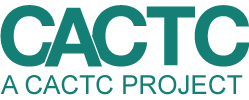Did you know we ask teens about their families on the youth survey? That’s right! We have some inside knowledge into how family interactions could impact youth substance use right here in Cortland County.
First a little background—part of our survey design is to assess risk and protective factors related to youth problem behaviors, like underage drinking. Not sure what those are—totally fine—I will explain!
Here are some definitions:
Risk Factors: are known to increase the chances or predict that a problem will develop. Risk factors exist for diseases like lung cancer (risk factor: smoking) and teen substance use (risk factor: easy access to drugs).
Protective Factors: are a positive buffer against risk factors and reduce the likelihood a problem will develop. Like risk factors, they exist for all disease, lung cancer (protective factor: quitting smoking) and teen substance use (protective factor: being involved in extracurricular activity).
Each teenager has some degree of risk factors and protective factors—it is how all of these components interact that determine if the teen will use substances.
Enough on that—how do parents play into risk and protective factors? Each year, we measure three different family protective factors; family attachment, prosocial involvement, and rewards for prosocial involvement. Under each of these categories there are multiple questions we use to assess these areas. I think many of you will be interested and happy about the results!
All of the stats included in the following sections are from the 2020 survey of over 1,800 Cortland County 7th-12th graders. Check out the dashboard below to learn more about parent protective factors in Cortland County.
Prosocial Involvement
Research shows that teens who are offered more opportunities to participate in family activities and responsibilities are less like to use substances. Here in Cortland County, the youth survey suggests that most families are providing their teens with opportunities for prosocial involvement.
Most 7th-12th graders in Cortland County report:
- They can go to their mom or dad for help with a personal problem (77.4%)
- Their parents give them lots of chances to do fun things with them (79.7%)
- Their parents ask what they think before making family decisions effecting them (60.9%)
Including your teen in decision making—like discussing what they think the consequences should be if they use alcohol or drugs—can protect them from using substances
Rewards for Prosocial Involvement

When family members encourage and praise their child, they are less likely to engage in substance use. Being a positive and supportive role model is one of the best things a parent can do. These stats might come a surprise to some parents—but most teens in Cortland County actually report they enjoy spending time with their mother and father!
- 82.8% of 7th-12th graders report they enjoy spending time with their father
- 88.4% of 7th-12th graders report the enjoy spending time with their mother
If you need some guidance (or new ideas!) for fun family activities, check out our positive parenting page: https://www.upstreamparent.org/?cat=39
Family Attachment
Family attachment questions assess whether or not teens feel they are a valued part of their family. Research shows teens that are more likely to report indicators of family attachment are less likely to use substances.
Most 7th-12th graders in Cortland County report:
- They feel very close to their father (73%) and mother (81.3%)
- They share their thoughts and feelings with their father (53.6%) and mother (63.1%)
Engaging your teen in activity and having open conversations where you ask questions, rather than lecture, is a strategy Cortland County parents can use to increase the chances your teen will share their thoughts with you.



